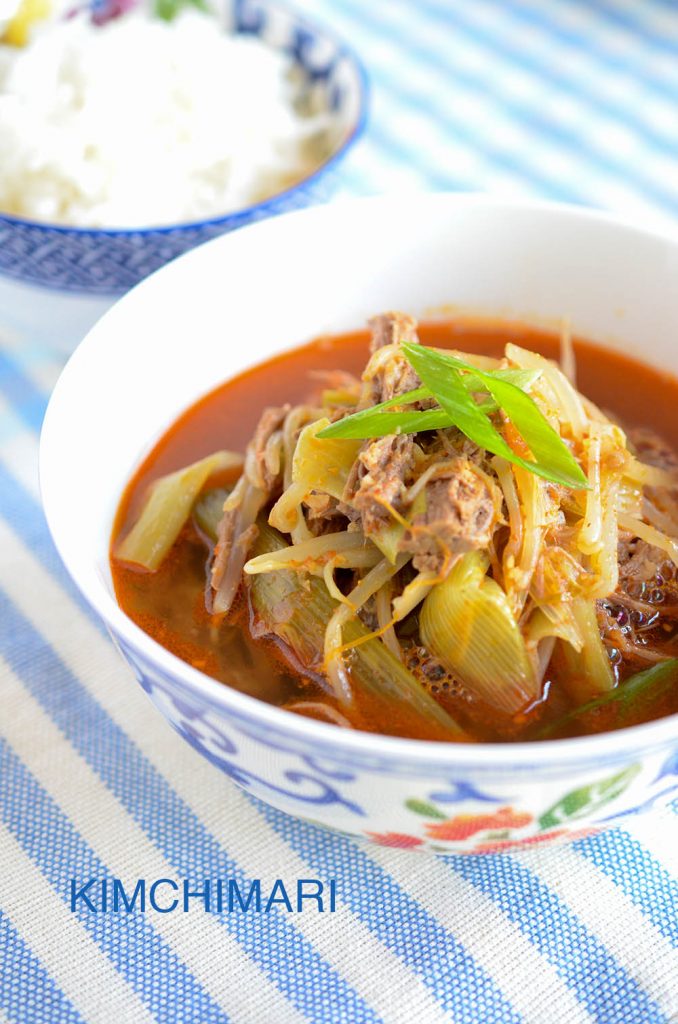
Yukgaejang or Yukgyejang (육개장) is a soup that I have made for over 20 years and the version I make at home is somewhat different from what I actually grew up with. The classic traditional Yukgaejang soup recipe consists of brisket meat, Gosari (Bracken Fiddleheads) in addition to lots of green onions, bean sprouts and eggs. And this recipe is what I grew up eating. I love Gosari in Yukgaejang and so in the beginning it was hard for me to even imagine it without Gosari. But cooking for my husband changed all that.
Right, my dear husband….the first time I made Yukgaejang for him, he made a comment that was something like
“Um.. Yeobo (여보)..you really don’t have to put Gosari in Yukgaejang. Isn’t it also a lot of work for you??”
Yes, of course, it IS more work for me because I have to rehydrate dried Gosari for hours, trim any tough ends, rinse, etc. But I thought he was just saying it to make my life easier so I kept adding Gosari in the Yukgaejang. 🙂 Until… finally one day, he goes
“Yeobo, can you NOT put Gosari in my Yukgaejang..because you know..they say it’s not good for men.”
What?? OH!!!! And then I remembered hearing that Gosari is known among Koreans that it diminishes a man’s stamina. ☺️ As I mentioned before in my Gosari Namul post, there is no scientific evidence that this is the case except that when you eat a lot of uncooked bracken fiddleheads (gosari), you can get vitamin B deficiency. I think this came as a concern during war times in Korea because people were generally malnourished. But as long as you are eating healthy meals and you cook it, no need to be concerned at all. Bracken fiddleheads have lots of other nutritional benefits including a lot of fiber, so it’s a good thing.
Over the years, I have really grown accustomed to and developed a fond liking to our family’s simplified Yukgaejang recipe without Gosari. It is much simpler to make and I feel it is clean and pure tasting in it’s own way. Also, no special Korean ingredients are needed except Guk Ganjang! But if you love Gosari, by all means, just add to this recipe. I usually make a big batch and store any leftover soup in fridge for few days or freeze it for later. It is a great hearty soup for your whole family anytime. If you have kids or cannot eat spicy, you can make a separate pot without chili powder and it will be good that way too.
When we lived in Florida in the early 90’s, no grocery stores sold unseasoned, raw beef brisket. The only way you could get beef brisket was in packages that came brined for Corn Beef. My guess is that all beef brisket was used as packaged corn beef, much like how almost all pork belly are made into bacon?! But times have changed and recently I was so pleasantly surprised to find a beautiful piece of brisket at our neighborhood grocery store!! I love it!!
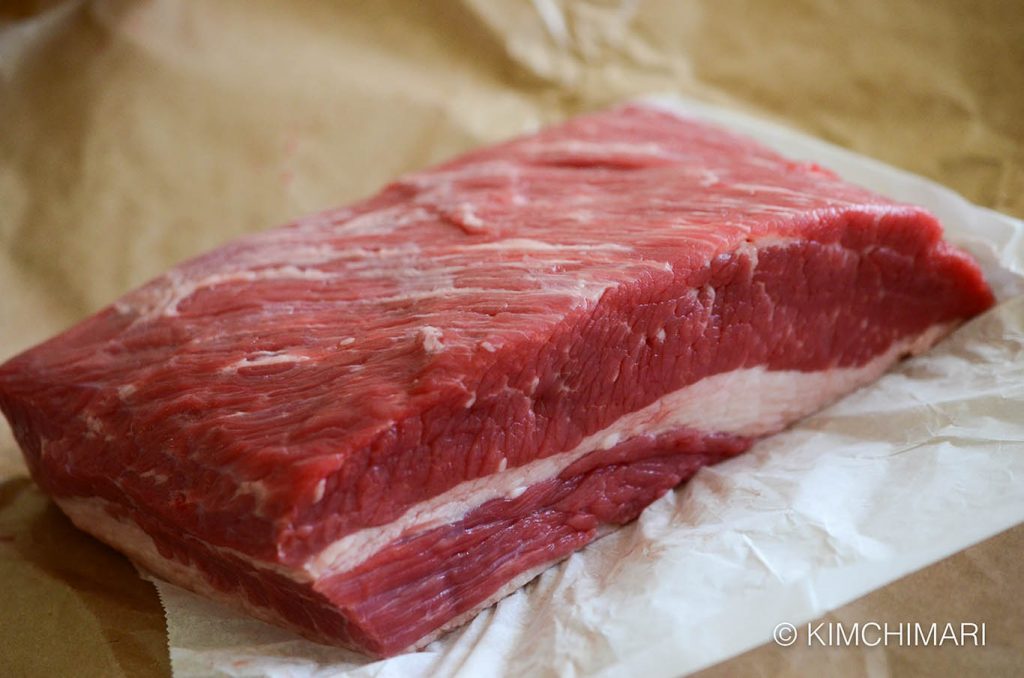
And here is a pic of the brisket flipped over with the fat side up. Usually the fat is used as-is when using brisket for grilling but not for our soup.
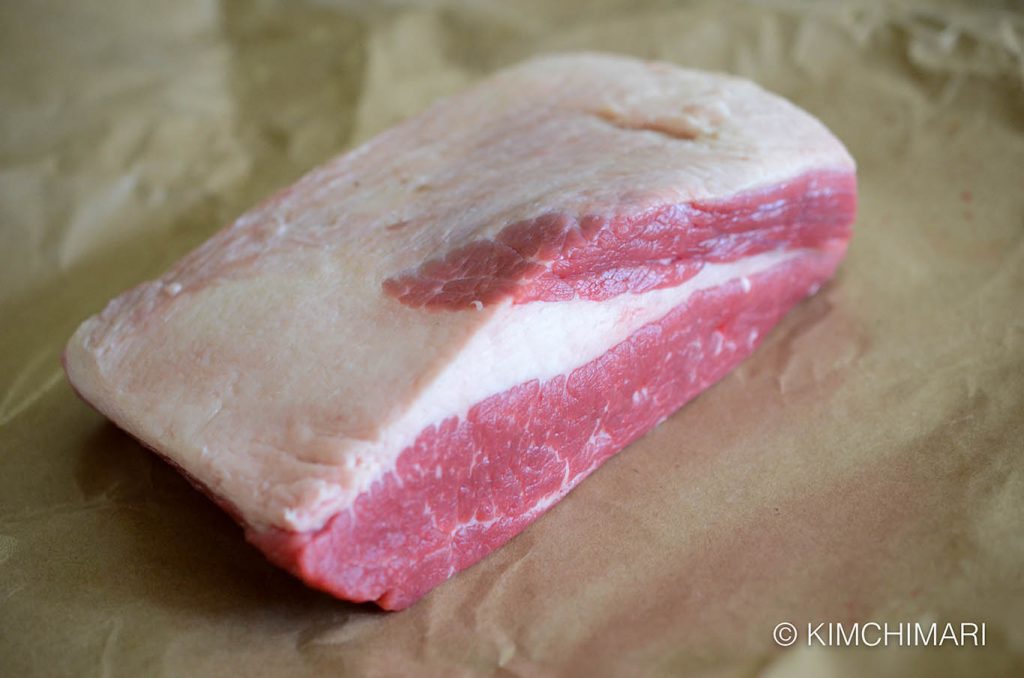
So, I bought 2 lbs (900 grams) of brisket. Roughly this equates to Yangjimeori 양지머리 in Korean but to be more precise, Korean Yangjimeori cut equates to Flat Cut/Flat Half/First Cut of the brisket and NOT the whole brisket as in this picture. The brisket piece in the picture is just a partial cut of the whole brisket including both the point and flat cut. The Point Cut/Point Half/Second Cut of the brisket in Korea is what Chadolbaegi 차돌박이cuts come from. I digress a little bit here and will show you a pic of how Chadolbaegi cuts look like –

The point cut of brisket is cut paper thin against the grain including the fat and this makes fabulous Chadolbaegi cuts for Korean BBQ. See my Know Your Beef Cut post if you need more info on Korean vs US beef cuts. Texas A&M Agriculture Dept. has a great article and more pics on different brisket cuts.
For the soup, I trimmed off the fat like so-

Now off to make some hearty, spicy and warming soup!
Yukgaejang – Korean Spicy Beef Soup
Servings: 6 servings Time: 1 hour 30 minutes Difficulty: Medium
Ingredients
- 2 lb (900 g) beef brisket, fat trimmed
- 16 cups (1 gallon = 3.8 litre) water
- 3 bunches green onions
- 1 bag (12 oz) fresh mung bean sprouts
- 1 ~ 2 handful of reconstituted gosari (bracken fiddleheads) – optional and omitted in this recipe
- seasoning
- 2 Tbs guk ganjang (Soy Sauce for Soups)
- 2 Tbs Korean chili powder (Gochukaru) or more
- 3 Tbs sesame oil
- 2 tsp sesame seeds, crushed
- 2 tsp sea salt
- 1/2 tsp sugar
- 4 tsp chopped garlic
- 1 tsp garlic powder
- 1/2 tsp black pepper
- Rinse your fat trimmed brisket in water and then add to a stock pot big enough to hold 1 gallon of water plus room for boiling.
Brisket in pot for Yukgaejang - Turn heat to medium high and bring to boil. Skim off any foam that comes to the top.
- Reduce heat to medium low and simmer for about 1 hour or until a fork goes in easily into the meat. Meat should be tender enough for you to tear off brisket by hand pretty easily. There will still be a little bit of resistance and that’s OK since we will be cooking the meat further.
- In the mean time, clean green onions and cut them into thirds. If there are some green onions that are too thick (think about chewing on it), split the white part in half lengthwise first and then cut into pieces about the length of your palm.
Green onions cut for yukgaejang - When done, the stock should be nice and cloudy like below. You can actually just stop here and eat the soup and meat like it is. See my post for Hearty Beef Soup (Gogiguk) on how to make the most delicious plain beef soup. Take out the brisket and let it cool.
Korean beef brisket soup or stock for Yukgaejang - Once the meat is cool enough to handle, tear the meat into pieces, following the grain. You will have a pile of wonderfully chewy and flavorful brisket meat. Steal a few pieces into your mouth if you are hungry.. 😉
Torn brisket for Yukgaejang - Season the torn brisket pieces with soy sauce, chili powder, sesame oil, sea salt, sugar, garlic, garlic powder, sesame seeds and black pepper.
Brisket meat with seasoning added Mix well with hands (use a plastic glove). And add couple handfuls of green onions and mix again.
Brisket meat for Yukgaejang seasoned - Add seasoned meat and green onions and rest of the green onions all back into the soup.
Yukgaejang in pot ready to cook - Turn heat on to medium high and bring to boil. Cook for 10 minutes and then add bean sprouts (and gosari).
Yukgaejang with bean sprouts added - Reduce heat and simmer 20 minutes or more. After about 10 minutes of simmering, taste the soup and adjust seasoning. Add more salt or more chili powder to taste. Simmer remaining 10 minutes.
Yukgaejang fully cooked in pot And there we have it!! Serve with some rice, kimchi and something not spicy like this tofu side dish that I have here. Yes, tofu side dish recipe is coming up soon!! FYI – the top left is made with tofu and broccoli, the smaller tofu dish is made with tofu and mugwort (ssukkat 쑥갓). They are both sooo good and healthy.
Yukgaejang (Korean spicy beef soup) with rice with tofu side dish
Notes and Tips
- My Yukgaejang is on the less spicy side. Add more chili powder and more sesame oil to make that chili oil layer on top (as you will probably see in many restaurants). I personally don’t care much for that much oil layer on top but it’s totally up to you. Korean spicy beef soup is one of those soups that taste better the next day. But of course, you don’t want to cook so much that everything turns to mush and also reducing the broth too much.
- If you love eggs, add some whipped eggs to the soup (like egg drop soup) few minutes before serving and it adds extra richness.
- Substitute regular Jin Ganjang if you don’t have Guk Ganjang. There will be less umami flavor but still good enough!
Hope this soup becomes your go-to soup as much as it did for me and my family!
Enjoy!
XOXO,
JinJoo
Yukgaejang - Korean spicy beef soup
Ingredients
- 2 lb beef brisket, fat trimmed
- 16 cups water (1 gallon)
- 3 bunches green onions
- 1 fresh mung bean sprouts (12 oz bag)
- 1-2 handful gosari, reconstituted (bracken fiddleheads – optional and omitted in this recipe)
Seasoning
- 2 Tbsp guk ganjang (Soy Sauce for Soups)
- 2 Tbsp Korean chili powder (Gochukaru, can add more to taste)
- 3 Tbsp sesame oil
- 2 tsp sesame seeds (crushed)
- 2 tsp Sea Salt (Trader Joe's)
- 1/2 tsp sugar
- 4 tsp chopped garlic
- 1 tsp garlic powder
- 1/2 tsp black pepper
Instructions
- Rinse your fat trimmed brisket in water and then add to a stock pot big enough to hold 1 gallon of water plus room for boiling.
- Turn heat to medium high and bring to boil. Skim off any foam that comes to the top.
- Reduce heat to medium low and simmer for about 1 hour or until a fork goes in easily into the meat. Meat should be tender enough for you to tear off brisket by hand pretty easily. There will still be a little bit of resistance and that’s OK since we will be cooking the meat further.
- In the mean time, clean green onions and cut them into thirds. If there are some green onions that are too thick (think about chewing on it), split the white part in half lengthwise first and then cut into pieces about the length of your palm.
- When done, the stock should be nice and cloudy. You can actually just stop here and eat the soup and meat like it is. See my post for Hearty Beef Soup (Gogiguk) on how to make the most delicious plain beef soup. Take out the brisket and let it cool.
- Once the meat is cool enough to handle, tear the meat into pieces, following the grain. You will have a pile of wonderfully chewy and flavorful brisket meat.
- Season the torn brisket pieces with soy sauce, chili powder, sesame oil, sea salt, sugar, garlic, garlic powder, sesame seeds and black pepper.
- Mix well with hands (use a plastic glove). And add couple handfuls of green onions and mix again.
- Add seasoned meat and green onions and rest of the green onions all back into the soup.
- Turn heat on to medium high and bring to boil. Cook for 10 minutes and then add bean sprouts (and gosari).
- Reduce heat and simmer 20 minutes or more. After about 10 minutes of simmering, taste the soup and adjust seasoning. Add more salt or more chili powder to taste. Simmer remaining 10 minutes.
Tips & Notes:
My Yukgaejang(육개장) is on the less spicy side. Add more chili powder and also more sesame oil to make the chili oil layer on top that you will probably see in many restaurants. I personally don’t care much for that much oil layer on top but it's totally up to you. Korean spicy beef soup tastes better the next day. Store leftovers in fridge for few days or freeze for later.


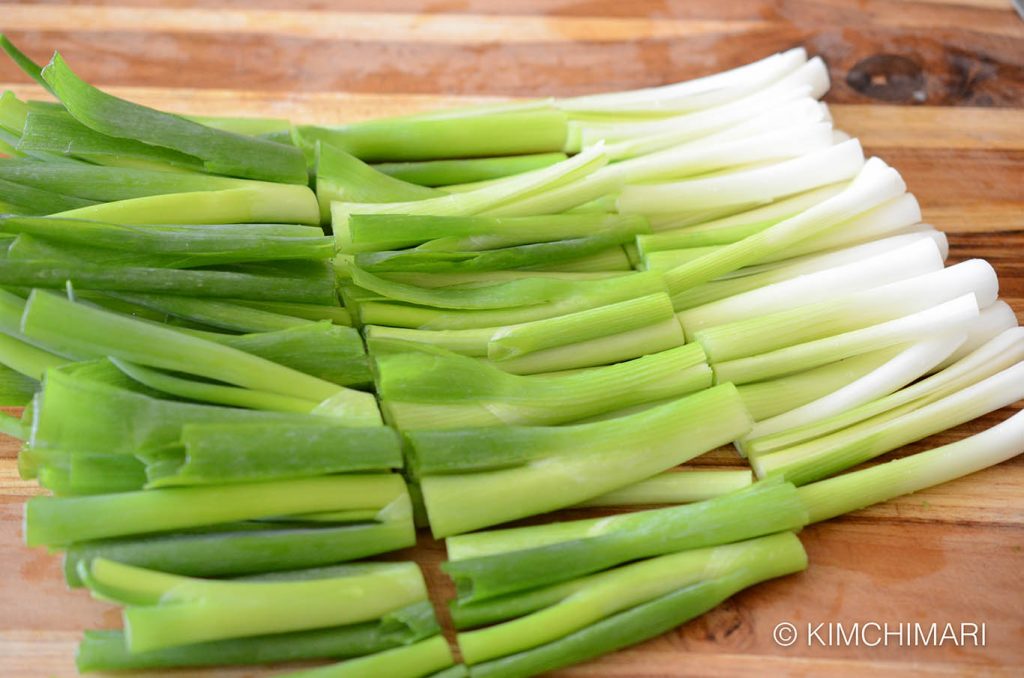
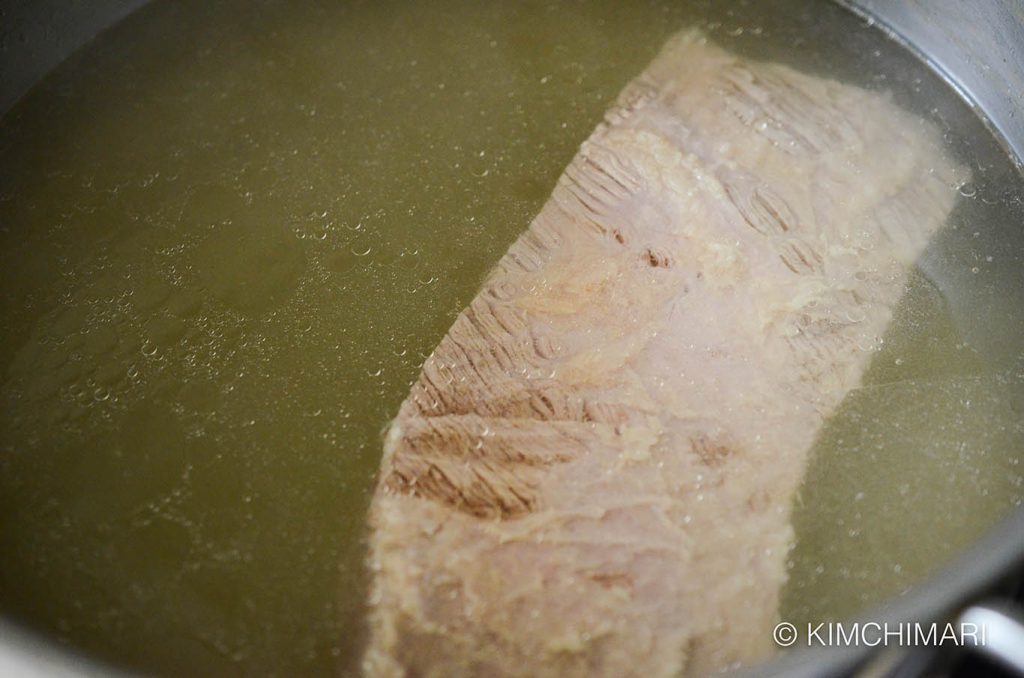
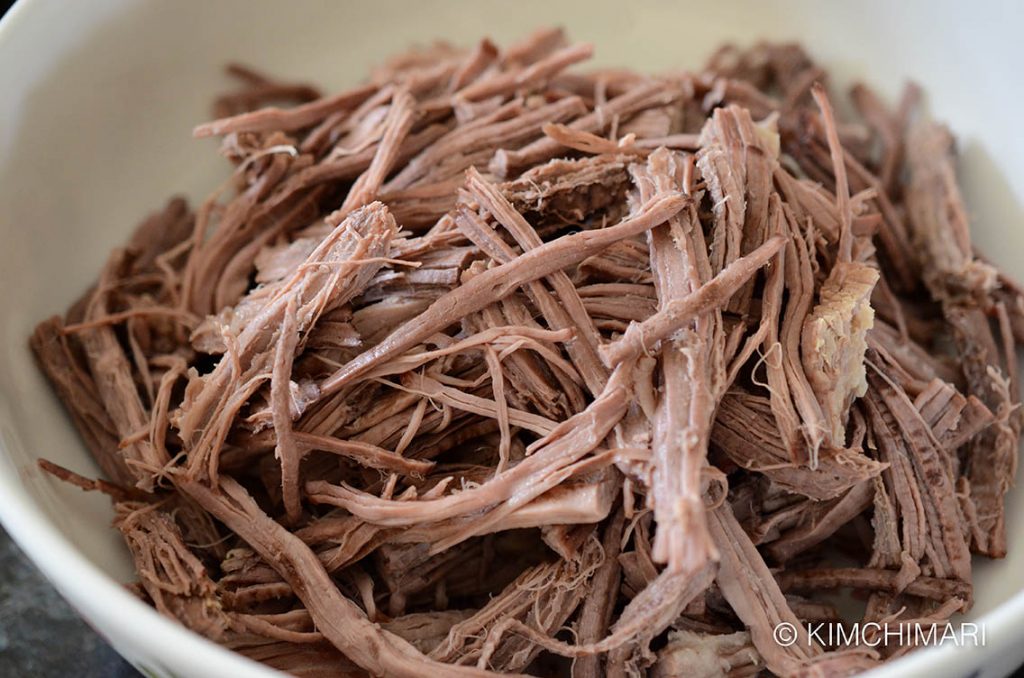
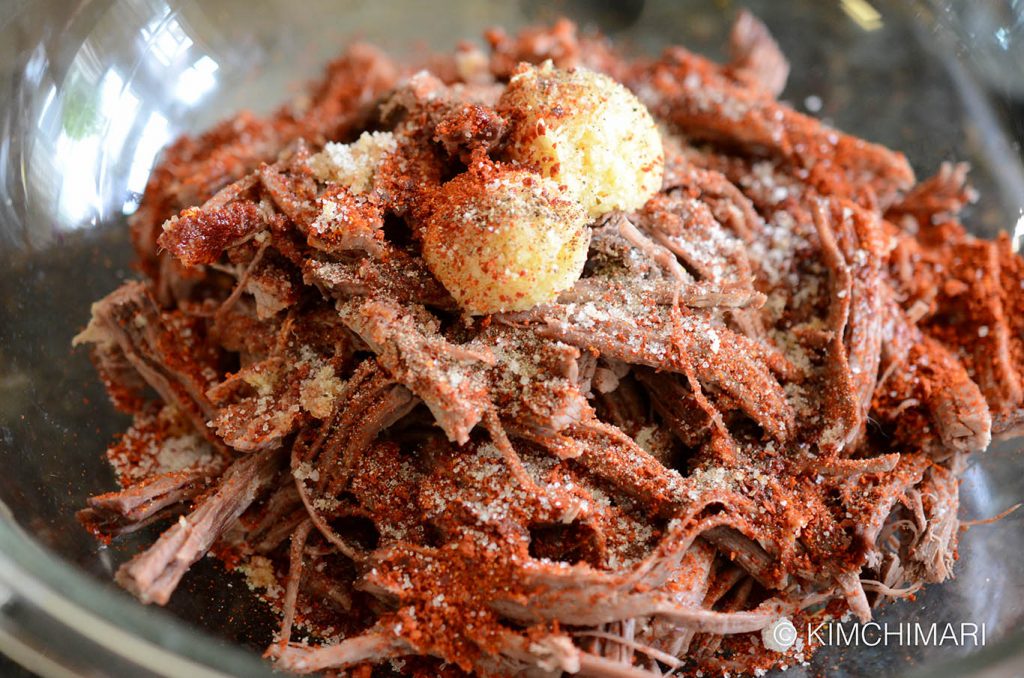

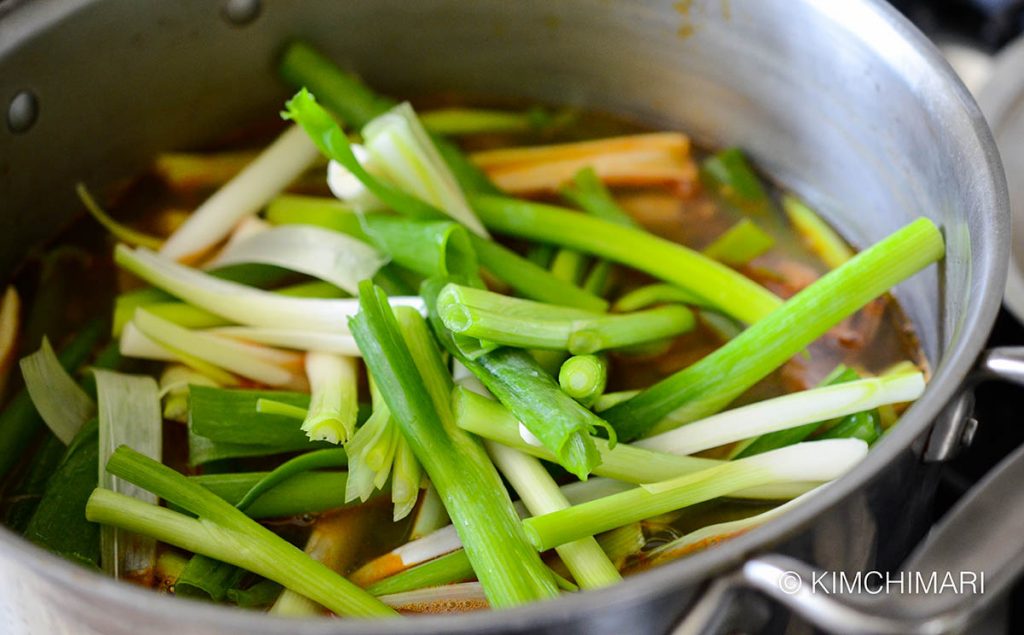
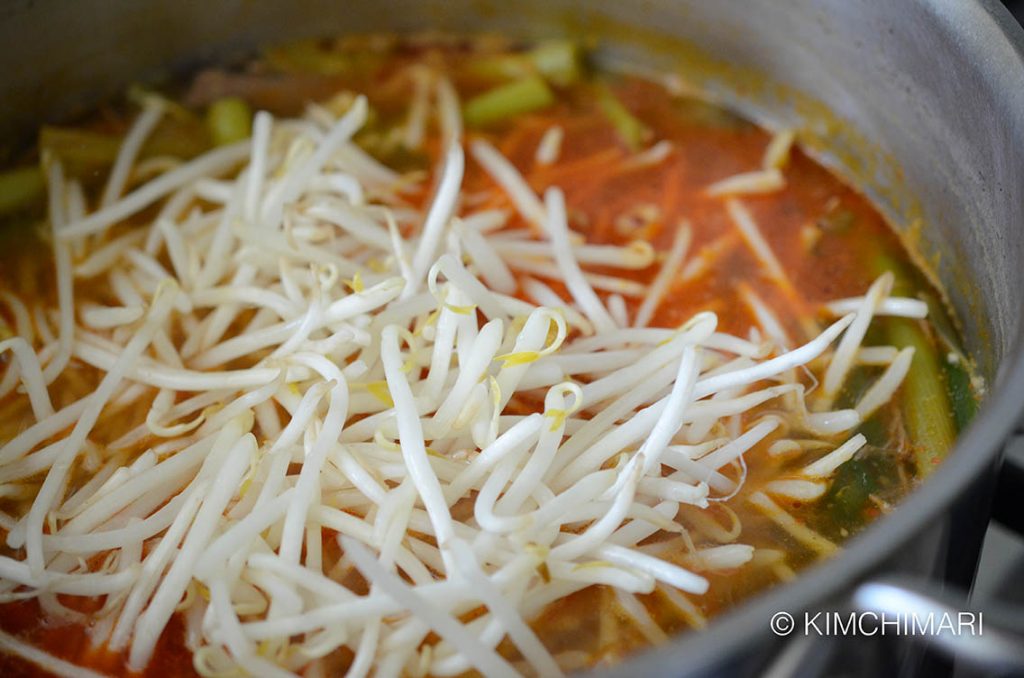
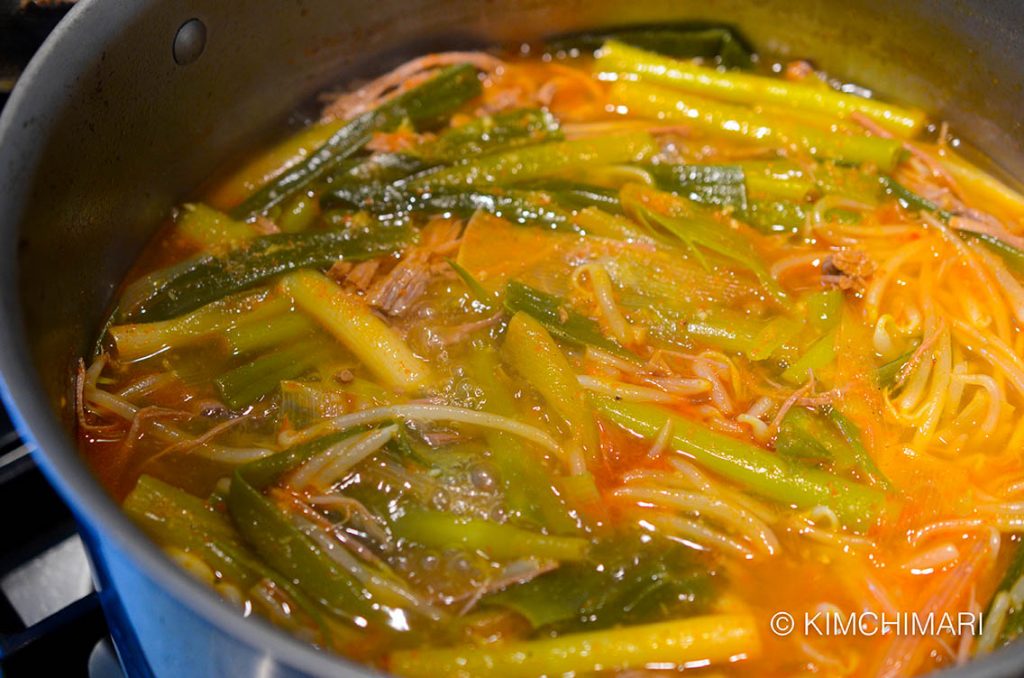

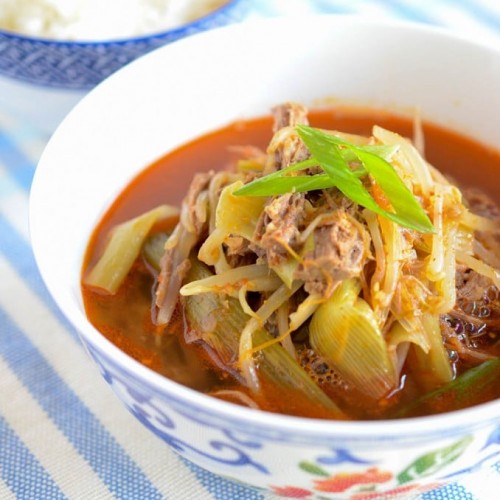
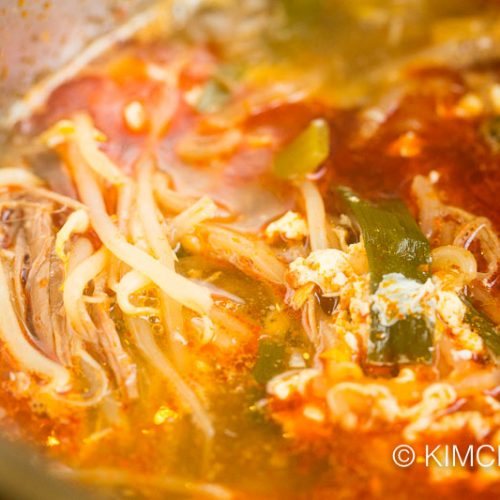
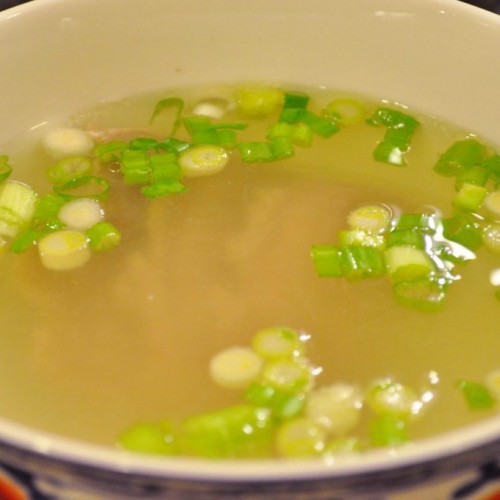
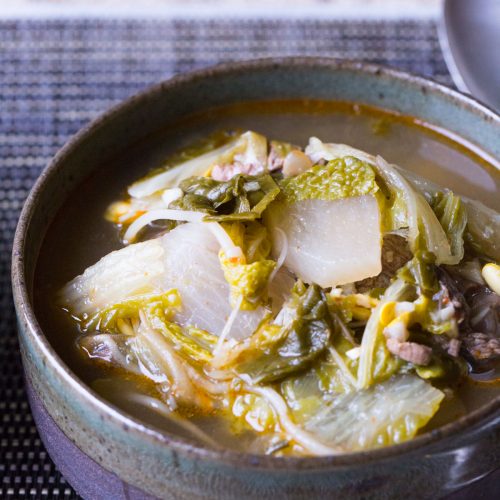

















It was really delicious, I love every one of your recipes. They’re just so authentic and also very easy to follow. Thank you so much for sharing them with us.
yay!!! I’m sooo happy to hear that. You just made my day!!! Thank you so much for putting the time to add your feedback – I really appreciate it.
This is next on my list to try! Do you use a soup base?
HI! Not sure what you mean by soup base – it’s what you see in my recipe. I don’t use any instant or ready made soup base, if that’s what you mean. I like to cook from scratch. Cheers!
This recipe is great! I also read in another recipe that instead of fernbrake, they use watercress! I will be using your recipe, but adding watercress and omitting fernbrake because I also heard there are now links of fernbrake to cancer? Who really knows though… I’ll be back to let you know how it comes out! 😊
If you don’t want to use fernbrake, I would recommend just omitting it and not use watercress. Watercress is very soft and unless you are just going to add it at the end, I doubt the texture will be good if you cook it too long. As for fernbrake causing cancer – you can read about what I think in my Gosari Namul post. https://kimchimari.com/three-color-vegetables-samsaek-namul-brown-gosari/ Of course, it’s totally up to you what you decide but something to think about! Enjoy!
Delicious and easy to do. I added dashi and was great. Thanks for sharing!
Glad you liked it! Thank you for the 5 stars!!
Thank you so much for this recipe! I used premade beef bone broth as the soup base, which helped save time and really boosted the flavor. I also added a little extra Korean chili powder. My husband went back for seconds, so you know it’s a winner!
I am so happy to hear that!! Glad your family enjoyed the soup. Thank you for letting me know. Cheers!